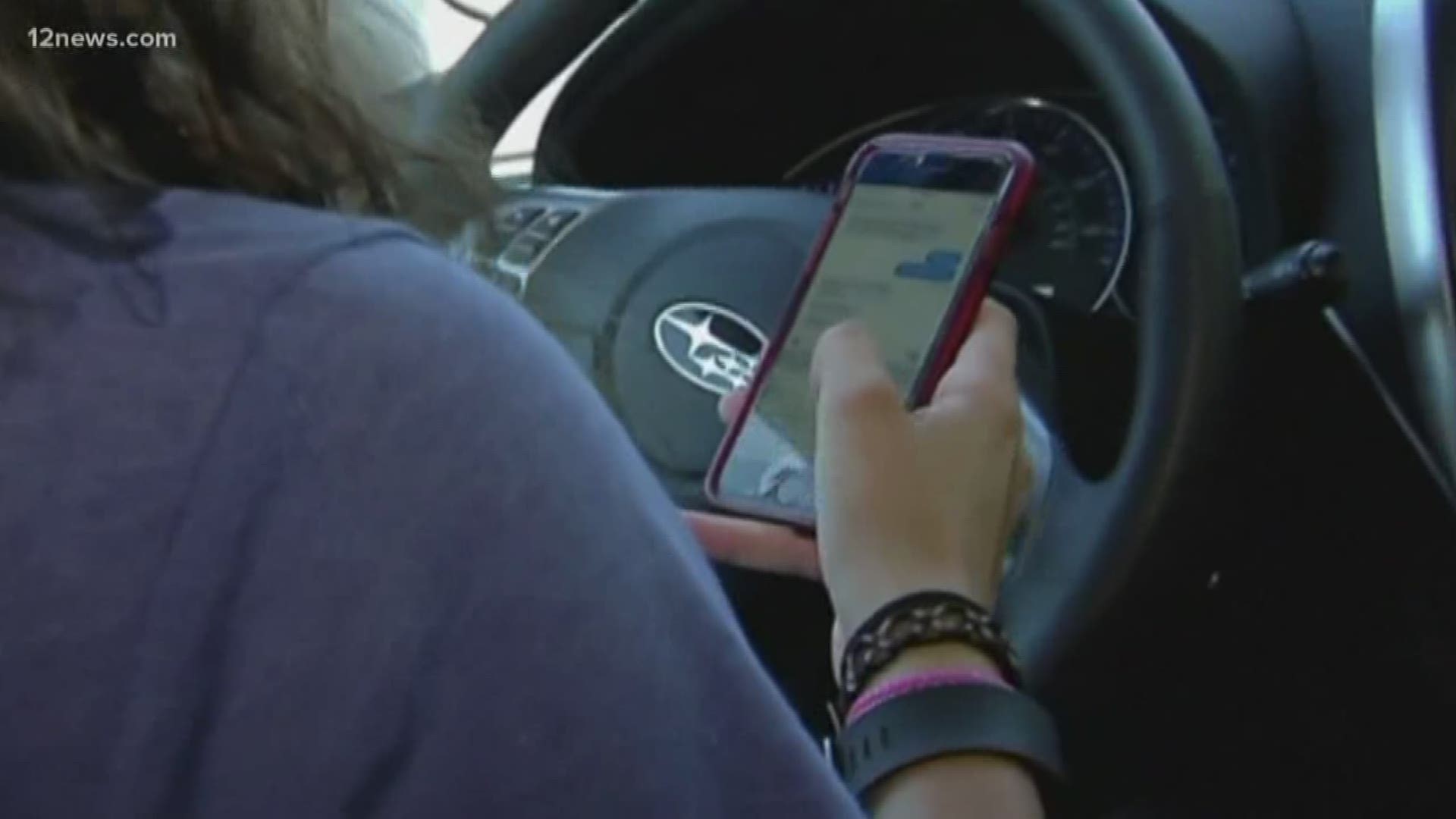The car itself was quite the distraction: a Dodge Hellcat Redeye.
I apologize if I got the name wrong, I'm not much of a car guy. However, the sound and power of that car's engine were unbelievable and something I had never experienced in my life.
But, unfortunately, I wasn't just there to test drive the Bondurant High Performance Driving School's selection of incredibly fast cars. Bummer, I know.
RELATED: Christian Bale spent 4 days at a Phoenix-area racing school preparing for 'Ford v. Ferrari'
I was there to be distracted. No, not by the cars, although as I said a few lines above, "quite the distraction."
Distracted driving is the leading cause of crashes. That's nothing new. You've probably heard it before, even from us most likely. You've also probably been subjected to some kind of distraction during your life on the road.
I admit I have.
Whether it's changing the radio, a quick glance down at your phone, a sip from your water bottle, or kids in the back seat, anything that takes your focus away from driving is a distraction. For that even split-second your focus leaves the road, your ability to avoid a crash or something happening in front of you is nonexistent or at the very least limited.
That's why I found myself behind the wheel of that beautiful car. How well would I perform as a driver under distractions?
Avoiding the accident
There was a stretch of asphalt and some cones which split into three lanes between me and three lights hanging from a pole at the Bondurant school.
Three green lights meant "Go!" and I was tasked with getting the car to a certain speed (45 mph was the max) before reaching the point where the cones began to split.
As I reached that point, the lights would switch leaving at least one lane "open" with a green light and the rest with red lights. I had to steer the car into the open lane while avoiding the cones, which for this exercise stood in for other cars or objects.
I started slow and gradually increased the car's speed until I was driving through the course at the max 45 mph speed. Even without distractions avoiding a crash at what seemed like the last second at that speed was difficult. I hit the cones a few times.
Then we threw in the distractions. I was subjected to everything from talking on the phone, answering a phone call and an "annoying kid" to changing the radio, solving the square root of 144 and Team 12's Will Pitts literally throwing stuff at me.
Weirdly, I almost got better at avoiding the cones with the distractions.
Here's what I learned
I anticipated the distractions
I knew what was coming. We talked about what we were going to do before I put my foot down on the gas pedal. So, of course, I was able to perform better while having things literally thrown at me, right?
Sure. But isn't that what we should be doing while we're driving anyway? Preparing for the worst so we can better react to it.
As a driver, you should be aware of everything around you. You should be giving yourself enough space between you and the car in front of you to react.
And you should be looking ahead even further than that car and know an escape route.
"There's a lot of desert here," Bondurant Chief Instructor Mike McGovern said, "If I have to go off into the desert to avoid crashing into the backend of that car in front of me, that's the path that I'm going to take."
My take away, you can never be too prepared for what could happen on the road.
Braking isn't always the answer
This one was tough for me. Because it's nature, at least for me, to brake when trying to avoid something. My first thought is to stop even before I reach it, which doesn't always work.
McGovern says if you need to use the brakes, then "absolutely use the brakes," but they're not always the answer.
"Going back to having that 3-second distance between us and the next car in front of us but then always positioning ourselves so we have a way out, slow lane, fast lane, there's the desert, you know, paying attention to what's going on" McGovern said. "we're going to be able to avoid probably more of those bad situations."
McGovern instructed me to lift my foot off the gas, steer away from whatever I'm trying to avoid and then put my foot back on the gas to speed away.
Also, if you can picture the steering wheel as a clock, place your hands at 9 and 3 that'll give you the best control over the car.
That ol' one-handed driving just ain't cool no more.

